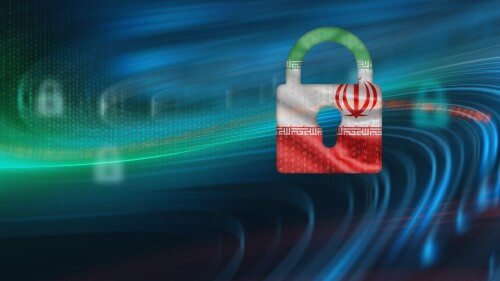In the second week since the end of Israel’s air campaign, Iran’s once-powerful ruler, Ali Khamenei, remains in hiding. Thousands of Iranians are mocking him online, flooding social media with jokes and memes, while others await a possible second wave of Israeli strikes—hoping it will accelerate the regime’s collapse.
Israel still dominates Iran’s vast airspace, with commercial air traffic nearly nonexistent—a fact that regime critics frequently point out to mock the Islamic Republic. It remains unclear whether Iran has been barred from resuming flights, or if its radar and air control infrastructure has been so badly damaged that normal airport operations are no longer possible.
An Iranian journalist abroad tweeted, “Ali Khamenei taking refuge in a bunker is neither a sign of wisdom, nor foresight, nor revolutionary courage. This act of seeking shelter means our skies are filled with Ababil birds, we are defenseless, and if Khamenei is lost, the collapse will only accelerate.”
Khamenei was conspicuously absent from this week’s Muharram mourning ceremonies—the first time in his 36-year tenure as Supreme Leader.
Khamenei was conspicuously absent from this week’s Muharram mourning ceremonies—the first time in his 36-year tenure as Supreme Leader. The ceremony was held in his own headquarters in downtown Tehran. An Iranian activist wrote, “For years, he disappeared others, imprisoned and executed them. Now he himself is under house arrest, vanished in a self-made prison in an unknown corner. The man who spoke unchallenged for 36 years and boasted with defiance now doesn’t even dare to attend a Muharram mourning ceremony in his own home.”
It’s yet another unmistakable sign that something is deeply amiss in Tehran. Is Khamenei truly too afraid to emerge from his underground bunker, or are powerful forces deliberately keeping him isolated as they search for an exit strategy to save the regime?
Netherlands-based Iranian political scientist and pollster Ammar Maleki wrote in a post on X, “These days, most people see Khamenei’s absence as a sign of fear. But another theory may be closer to the truth: that a power struggle has sidelined him from public view—and that this absence may not entirely be his own choice.”
Khamenei may well wish to emerge from hiding and deliver his usual threats and rhetoric in public, but according to Maleki, other senior figures prefer to keep him at a distance—fearing that being near him could make them targets of an Israeli strike.
However, “In the aftermath of the ceasefire, the Islamic regime and its functionaries will sooner or later have to choose between two paths: transformation or collapse. And it is the underground power struggle within the system that will determine whether Khamenei returns to the surface—or is sent to the heavens,” he concludes.
Former President Hassan Rouhani and his so-called “reformist” allies are allegedly maneuvering to curb Khamenei’s authority—or seize it outright.
The Middle East Forum previously reported that former President Hassan Rouhani and his so-called “reformist” allies are allegedly maneuvering to curb Khamenei’s authority—or seize it outright. In recent days, an unconfirmed report surfaced claiming they even reached out to Israel, offering a “regime change” deal in exchange for assistance. Regime opponents fear an “unholy deal,” perhaps with Washington, that could leave a tamed Islamic Republic in place, sealing the fate of any major political change.
However, it is obvious to millions of Iranians that the Islamic Republic suffered a major defeat at the hands of Israel, and their fear of the dictatorial regime has somewhat dissipated. Another activist related what a friend of hers in Iran revealed.
“People don’t just feel calm — they’re stunned. It’s as if we’ve suddenly realized that the monster we thought was hiding under the bed is just a pile of shoes. For years, we whispered in silence, tiptoed carefully, afraid we might wake it. … And now everyone is asking in disbelief: Is this what we were really afraid of?”
“This isn’t just a political collapse—it’s a collapse of the mind and emotions,” the activist wrote.
Many Iranians are asking if—and when—the public will dare to openly challenge the government through mass protests. It’s the million-dollar question no one can answer. Sensing revolutionary instability is one thing; predicting the precise moment a revolution erupts is nearly impossible.






